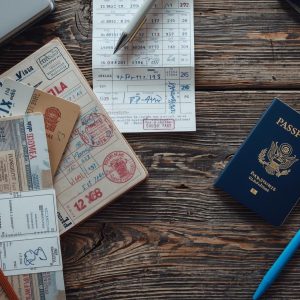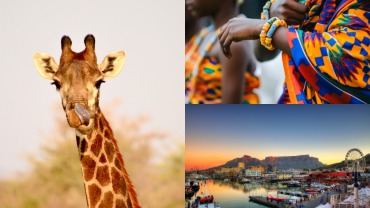Cross-Border Travel Tips for Short-Stay Visitors
Travelling across borders in Southern Africa can be one of the most exciting parts of your journey. Whether you’re heading from Namibia to Botswana, Zimbabwe to Zambia, or exploring the connections between South Africa and Mozambique, cross-border travel opens doors to new cultures, languages, and landscapes. For short-stay visitors, it’s also a chance to experience multiple countries in one unforgettable trip.
However, planning a cross-border journey requires care and knowledge. You need to understand visa rules, health requirements, local customs, and practical details like money and transport. The good news? With the right preparation, it’s smooth, safe, and rewarding.
This guide covers everything short-stay visitors need to know about cross-border travel in Southern Africa — from documents and safety to currency and etiquette.
Understanding Cross-Border Travel
Cross-border travel simply means moving between two or more countries. In Southern Africa, borders are well-connected, making it easy for travellers to explore multiple destinations in one trip. For instance, you can fly into Cape Town, cross into Namibia for the desert dunes, and continue to Botswana for a safari.
Short-stay visitors often combine urban attractions with wilderness adventures. You might visit Victoria Falls in Zimbabwe, cross into Zambia for a sunset cruise, then continue to Botswana for a wildlife experience in Chobe National Park. Because distances between borders are shorter than in many other regions, you can make the most of your limited travel time.
Still, each border has its own rules. While some crossings are open 24 hours, others close at night. Entry fees, visa costs, and vehicle permits also vary by country. That’s why having an updated plan helps you avoid surprises and enjoy your journey stress-free.
Essential Documents for Cross-Border Travel
The most important step before crossing any border is checking your travel documents. Without them, your journey stops before it starts.
Here’s what you’ll need:
-
A valid passport – Make sure it’s valid for at least six months beyond your travel dates and has enough blank pages for entry and exit stamps.
-
Visas – Some Southern African countries offer visas on arrival, while others require you to apply beforehand. Always check the latest visa policies for each destination.
-
Travel insurance – It’s not mandatory everywhere, but it’s highly recommended. Insurance protects you from unexpected medical or transport costs while travelling cross-border.
-
Vehicle papers – If you’re driving a rental car, confirm with the provider that cross-border travel is allowed. You’ll need permits such as a police clearance certificate or a Temporary Import Permit (TIP).
-
Yellow fever certificate – Some countries require proof of vaccination if you’ve recently travelled from areas where yellow fever is present.
Keep both digital and printed copies of your documents in separate places. Having them easily available can save time during border checks.
 Crossing Borders Smoothly
Crossing Borders Smoothly
When you reach a border post, stay patient and follow instructions from officials. Cross-border procedures often involve several steps — passport control, customs checks, and vehicle clearance if you’re driving.
A few tips make this process easier:
-
Greet officers politely and show respect.
-
Have your paperwork ready before reaching the counter.
-
Avoid taking photos or using your phone inside immigration areas.
-
Keep receipts for any payments or permits.
If you’re travelling with Knap Tours, their team ensures your cross-border process is seamless. They guide guests through paperwork, fees, and timing to help everything run smoothly. It’s one less thing to worry about when exploring multiple countries.
Understanding Local Currencies and Payments
Currency can be confusing during cross-border travel. Southern African countries use different currencies — for example, South Africa uses the rand (ZAR), Namibia the Namibian dollar (NAD), Botswana the pula (BWP), and Zimbabwe the US Dollar (US$).
However, many border towns and tourist hubs accept multiple currencies, especially the US dollar. Credit and debit cards are widely accepted in cities and hotels, though cash is still important in rural or remote areas.
Before you travel:
-
Exchange a small amount of local currency at official exchange points.
-
Keep small notes for tolls, border fees, and tips.
-
Use ATMs from trusted banks when possible.
-
Avoid changing money with street vendors.
Cross-border travellers can also use mobile payment options in some regions, such as e-wallets or card-based apps, but check availability beforehand.
Cross-Border Health and Safety Tips
Health and safety are priorities when travelling cross-border. Some areas may have health risks or require special precautions.
Here are simple steps to stay well:
-
Check vaccination requirements for each country.
-
Pack a small first-aid kit with essentials.
-
Drink bottled or purified water, especially in rural areas.
-
Carry insect repellent to prevent mosquito bites.
-
Keep an eye on your belongings in crowded places.
If you fall ill or need medical help, most towns near major borders have clinics or hospitals. Many short-stay visitors find it reassuring to travel with companies like Knap Tours, who provide support and emergency contacts throughout your journey.
Cultural Respect and Local Etiquette
Cross-border travel isn’t just about moving between countries — it’s about connecting with people and cultures. Every community has its own traditions, greetings, and social customs. Showing respect goes a long way.
Here are a few simple guidelines:
-
Learn a few local phrases — greetings in Setswana, Shona, or Oshiwambo are always appreciated.
-
Dress modestly when visiting villages or sacred sites.
-
Ask before taking photos of people or cultural performances.
-
Support local crafts and markets by buying directly from artisans.

When visiting cultural communities, it’s respectful to listen and learn rather than make assumptions. Every community you meet adds to the richness of your cross-border adventure.
Transportation Options for Cross-Border Travel
Getting around Southern Africa is part of the adventure. You can cross borders by air, road, or even river, depending on your route.
1. Air Travel
Regional airlines connect major cities like Cape Town, Windhoek, Gaborone, Lusaka, and Harare. Flights are fast and convenient but can be expensive for short-stay travellers.
2. Road Travel
Road travel gives you flexibility and scenic views. Many travellers choose guided tours or self-drive options. Before starting your cross-border road trip, ensure your vehicle has all required papers and safety gear.
3. Water Crossings
Some crossings, such as between Zambia and Botswana at Kazungula, involve ferry rides or bridges over the Zambezi River. They offer a unique experience and beautiful scenery.
If you prefer convenience, companies such as Knap Tours arrange private transfers between countries. This ensures reliable vehicles, safe drivers, and local insight on road conditions and travel times.
Border Timing and Travel Seasons
Not all borders operate around the clock. Some close as early as 6 p.m., while others stay open 24 hours, especially along busy routes. Always confirm operating hours before you set out.
Season also matters. During the rainy months (typically November to March), road conditions can change quickly. Some dirt roads may become muddy or impassable. Dry season, from April to October, is generally the best time for cross-border safaris and road trips.
Travelling early in the day helps avoid long queues and reduces waiting time at border posts. Planning your route in advance makes your cross-border journey far more comfortable.
Responsible Cross-Border Travel
Travelling responsibly benefits both visitors and host communities. Simple actions like avoiding littering, using eco-friendly products, and respecting wildlife have a lasting impact.
When you visit national parks or reserves, stay in your vehicle unless guides say it’s safe to get out. Keep noise levels low and never feed animals. Respect park rules and boundaries — they protect both you and the environment.
Many cross-border routes in Southern Africa pass through conservation areas where local communities work to protect natural resources. Supporting local lodges, guides, and shops helps these communities thrive while preserving their land for future generations.
Preparing for the Unexpected
Even the best-planned cross-border journey can have surprises — from power cuts to weather delays. Staying flexible helps you handle these with ease.
Keep a printed copy of your itinerary and accommodation details. Charge your phone before long drives. Carry snacks, water, and basic supplies, especially when travelling through remote areas.
If a delay occurs at the border, stay calm and polite. Border officials appreciate patience, and your positive attitude makes a good impression.
Final Thoughts on Cross-Border Travel
Cross-border travel in Southern Africa is an opportunity to experience diversity, beauty, and connection. Each border you cross offers something new — a different language, landscape, or flavor of local life. Whether you’re travelling for a few days or a couple of weeks, good planning helps you enjoy every moment.
With your documents in order, respect for cultures, and an open heart, you’ll find that the borders of Africa aren’t barriers — they’re gateways to discovery.





Comment (0)